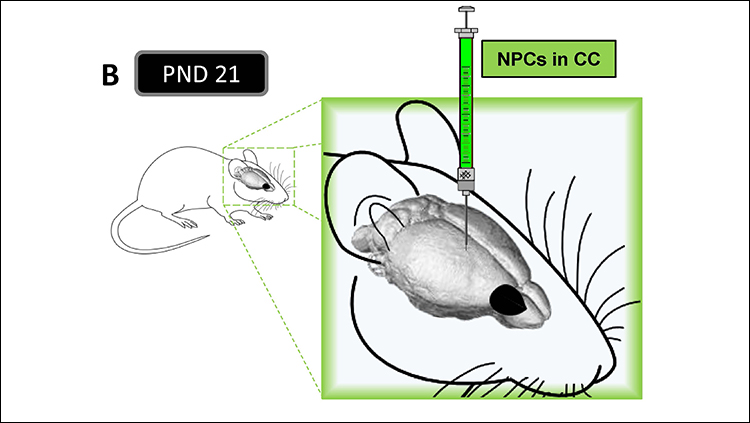Mouse Study Supports Stem Cell Therapy for Cerebral Palsy

Neural stem cells can repair damaged parts of the brain and restore motor impairments in mice that display features of cerebral palsy, according to new research published in eNeuro. These results demonstrate the feasibility of using stem cells to address the underlying brain injuries responsible for this group of common movement disorders.
Michael Fehlings and colleagues induced a mild brain injury in young male and female mice that reproduces features of cerebral palsy and injected neural precursor cells into the corpus callosum — the dense bundle of nerve fibers connecting the left and right sides of the brain, in which myelination is significantly impaired. With this approach, the researchers demonstrated recovery of lesions in the corpus callosum as well as the hippocampus and the cortex and improved walking and limb use. Although further research is needed to better understand the mechanisms underlying this recovery, the study suggests that neural precursor cells may build a “bio-bridge” that enable the brain’s own oligodendrocyte cells to repair myelination lost as a result of the injury.
Article: Exogenous Neural Precursor Cell Transplantation Results in Structural and Functional Recovery in a Hypoxic-Ischemic Hemiplegic Mouse Model
Corresponding author: Michael Fehlings (University Health Network, Toronto, Canada), michael.fehlings@uhn.ca

















